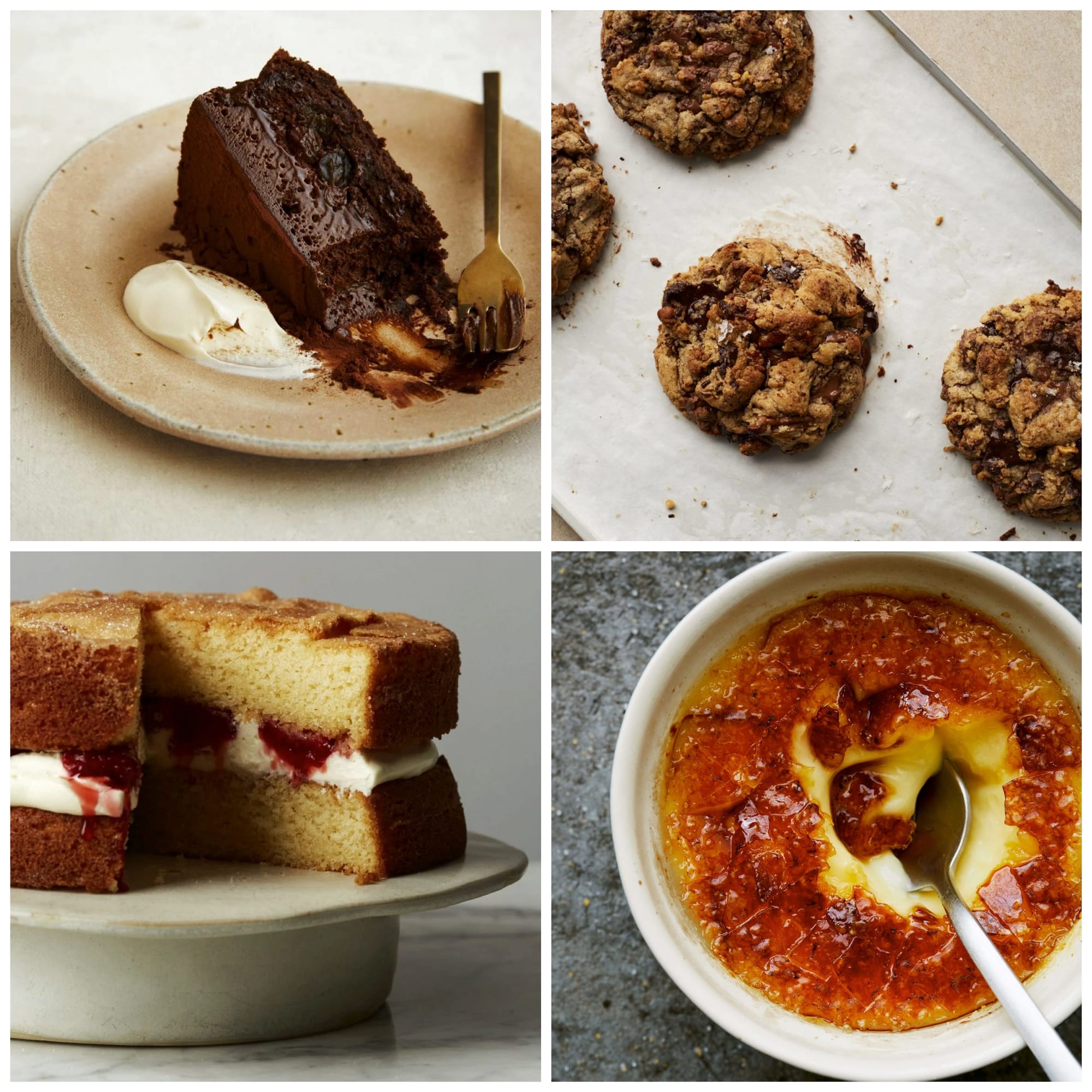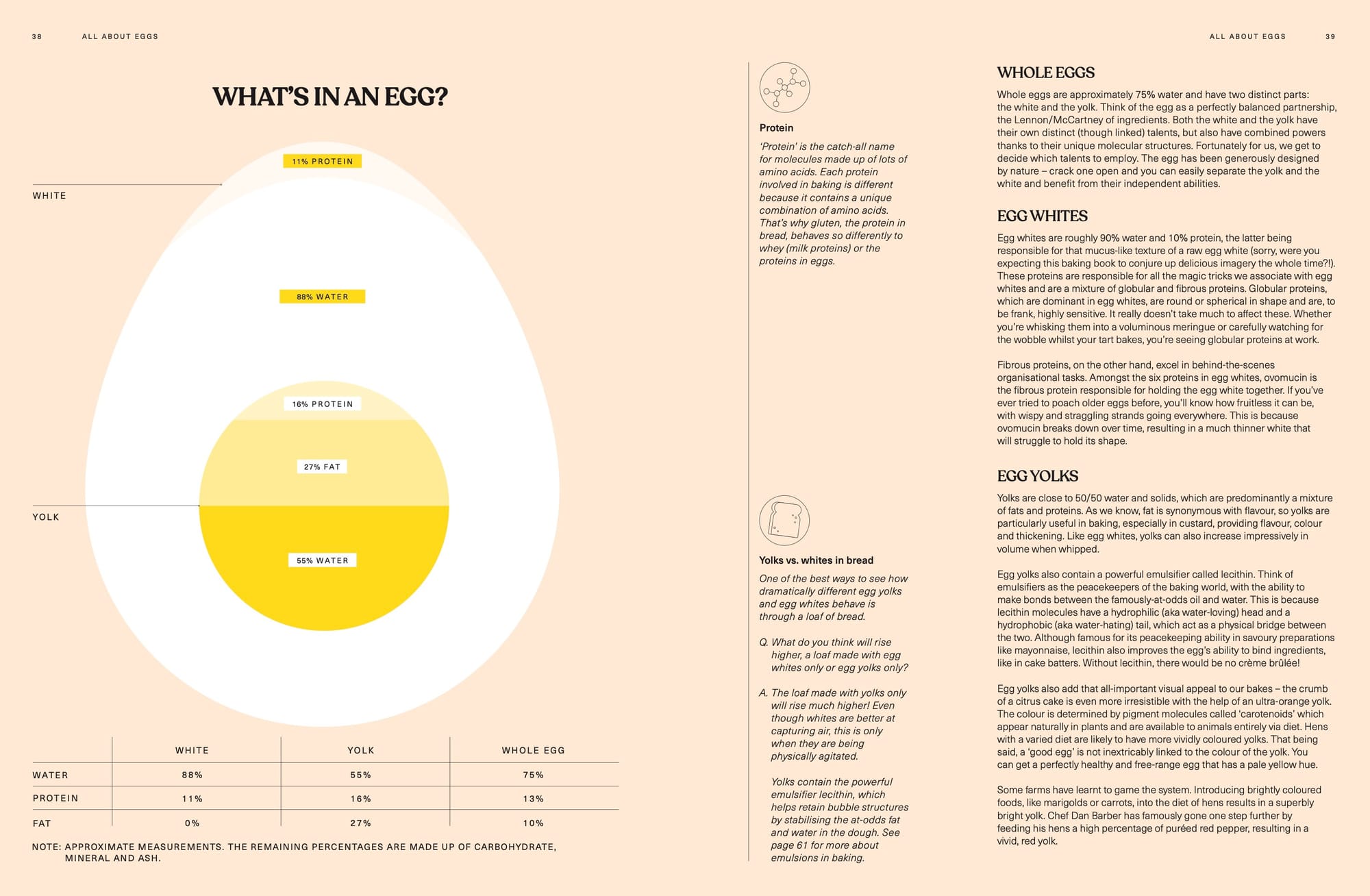Sift: The Elements of Great Baking, by Nicola Lamb
How brioche relates to ganache

Table of Contents
I couldn’t be more excited about the (UK) release of ’s new book, Sift: The Elements of Great Baking. Nicola helms the newsletter , a perennial Wordloaf fave, since it explores all things baking and pastry with a deep understanding of science and shares inventive, and gorgeous recipes. Sift is essentially Kitchen Projects in book form, and many of the recipes it contains are drawn from the newsletter.
The book contains more than a hundred recipes, organized by order of complexity or time required, covering all the classics of pastry and beyond, with each given Nicola’s signature creative flourishes.

It begins with a short collection of base recipes that reappear elsewhere in the book, for fundamental doughs and elements like meringues, bun and bread doughs, puff pastry, pie, and tart doughs, sponge cake, pâte à choux and more. This is followed there is a long section of “afternoon” recipes that can be completed in a few short hours, dishes like apricot and rosemary polenta cake, tomato and fennel tart tatin, brown butter banana cookies, PBJ Paris-Brest cake, and flaky cheese and pickle scones, which Nicola let me share with you here:
Then there are “day” recipes, which require a bit more time to pull off: rhubarb and custard crumb cake, Parmesan and tomato linzer torte, maritozzo, chocolate peanut ice cream bars, brown sugar canelé, and more, including olive oil brie-oche buns with roasted grapes, honey, and thyme, which I also got Nicola to share with us:
The final section of the book is for “weekend” projects such as a long-fermented (but simple) 3-day focaccia, tiramichoux (which, as its name implies, is a tiramisu made from choux puffs, drizzled with a coffee brown butter sauce), galette des rois, and a mocha passionfruit opera cake. This section also includes a long and thorough guide to laminated viennoiserie, with recipes for croissants, pain Suisse, danishes, and more.
The recipes alone make Sift well worth the cover price, but it's the 100+ pages of front matter that make it truly special, especially for a baking nerd like me. It contains a series of multi-page illustrated spreads on the key ingredients in baking (flour, sugar, eggs), how things rise (from steam to yeasted fermentation and everything in between), color (browning in all its forms and how to modulate it), and texture, whether in flour-based matrices or liquids like custards, sauces, and frozen desserts. Each section is filled with practical science intel, presented with a combination of concise text and dynamic visuals, making the subject matter alive and easily grasped. Here’s just a single spread from the thirteen pages on eggs to give you a sense of what I mean:

Between the science sections and the recipes is a “technical overview” that serves as a bridge between them, providing concrete information about techniques, guidelines, and troubleshooting for the baker working with the recipes. And every recipe includes a callout to relevant sections from the front matter that are worth revisiting closely before and during baking. It’s a clever and efficient way to present things, allowing the recipes to fit on a few short pages, while still including everything someone might need to pull each of them off.
Sift is without a doubt a book every baker is going to want to own. It was released in the UK earlier this month; the US edition will be published by Clarkson Potter on 11/12. I’ll definitely be reminding you all about it again as the US pub date approaches, but you should place a preorder for it now anyway:1
I’ll leave you with a bit from Nicola’s introduction, to give you a taste of what’s in store for you:
Welcome to the world of baking, a wonderful place where ingredients transform right before your eyes. It's a place where lumps of butter and dough become impossibly fragile flaky croissants, where the wobble of a custard tart appears to defy physics and egg whites are whipped into a frenzy of creamy clouds. When you learn to bake, it sometimes feels like you're becoming a magician. And although it IS magical, it isn't magic.
And I want to tell you why…
In this book, I want to help pave a direct path to that joy. I want to teach you the fundamental principles and techniques that underpin and connect our recipes. Learning to understand the 'why' of baking through the lens of science has helped me feel more confident and independent in the kitchen: imagine a detective’s investigation board with string connecting all the different elements of pastry, showing how choux buns are connected to bagels, how brioche relates to ganache and what jam and ice cream have in common. I'm no scientist, but I have learnt to play by the rules set by each ingredient, which ones play nicely together and which should be kept apart!
You paved that path, Nicola, and this book is destined to be a classic, without a doubt.
If you really cannot wait, there’s always this option. ↩
wordloaf Newsletter
Join the newsletter to receive the latest updates in your inbox.




